This post describes the development of a method to predict metro station locations using Graph Neural Networks (GNNs). Our journey began with a challenge familiar to urban planners: how to strategically place new metro stations to optimize transportation networks. In this case the city of Stockholm was used as testbed.

The Challenge of Data Imbalance: Initially, we faced data imbalance issues due to the disparity between nodes in the road network graph (30,000) and actual metro stations (200). This led us to innovate with clustering techniques, grouping nodes into clusters to predict areas likely to contain stations rather than individual nodes.
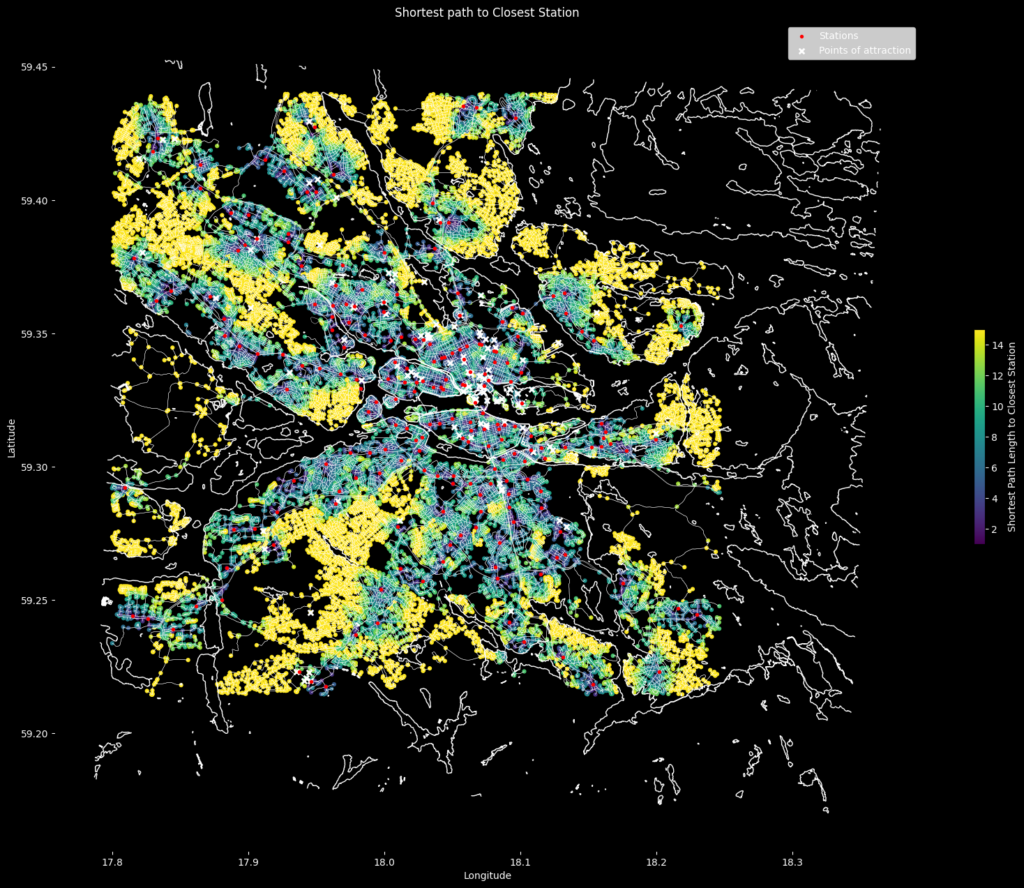
Data and Features: Our model incorporated crucial features such as:
- Population Density: Highlighting areas with higher transportation needs.
- Amenities and Points of Attraction: Identifying activity hubs influencing passenger flow.
- Area of Influence of Existing Stations: Understanding passenger catchment areas.
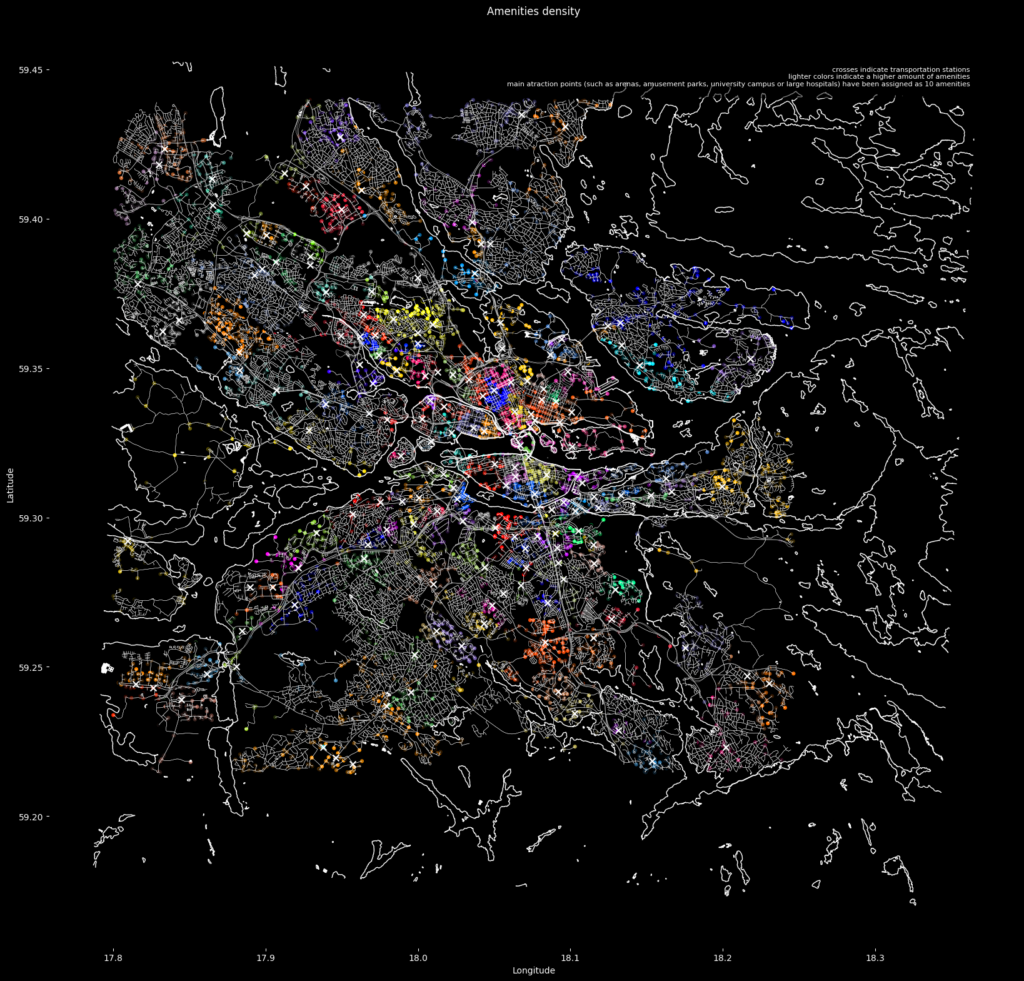
Model Development: Using Graph Neural Networks (GNNs), we trained our model to learn complex spatial relationships within the city’s road network. This enabled us to predict clusters where new stations should ideally be located based on existing infrastructure and demand indicators.
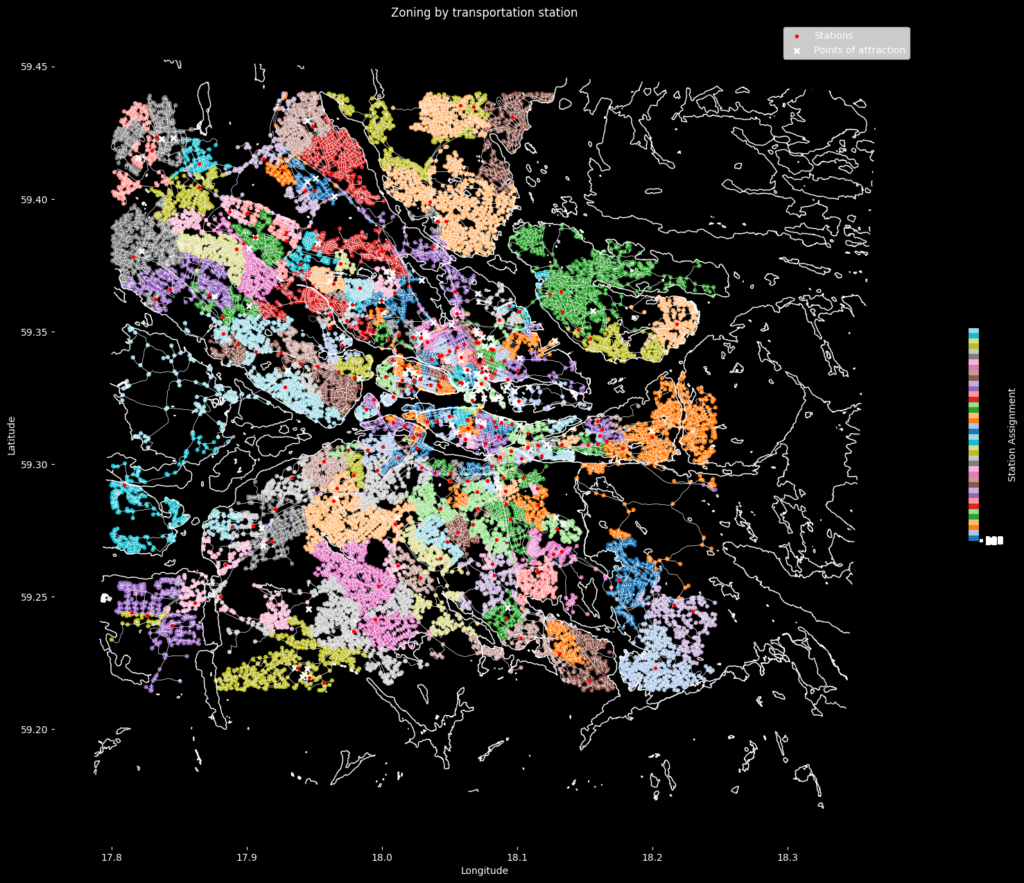
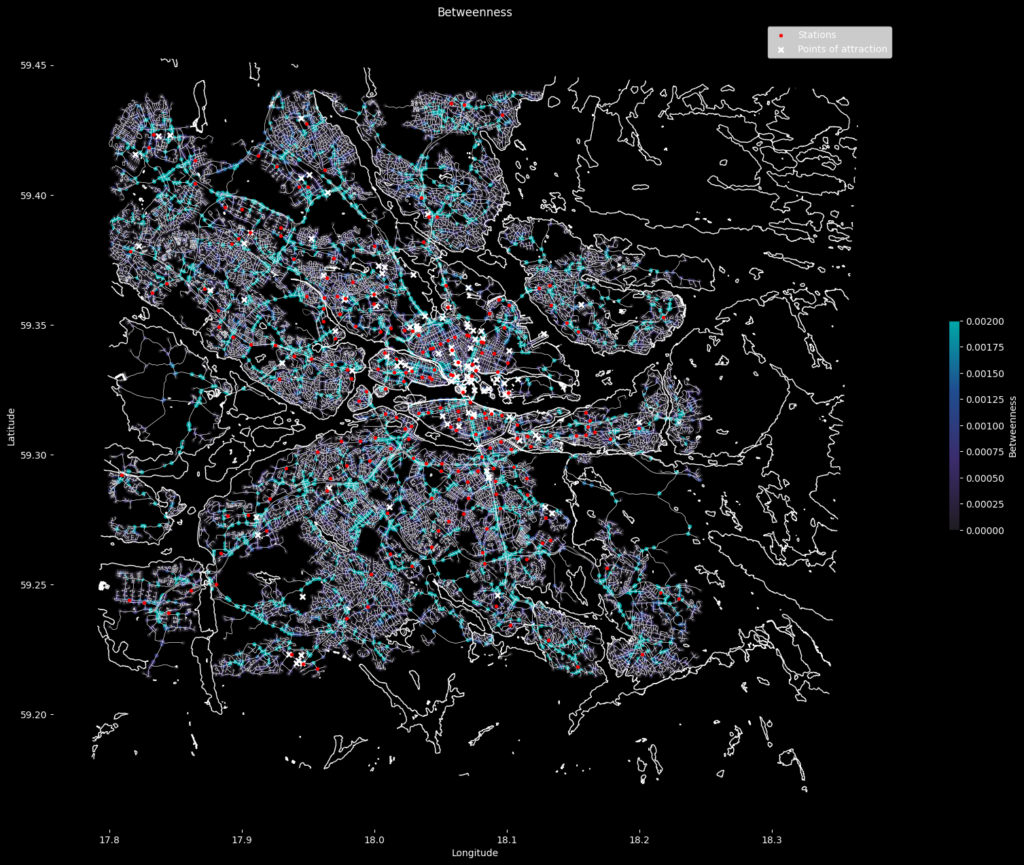
Results and Validation: Through rigorous testing and validation, our refined approach achieved a remarkable 99% accuracy in predicting clusters containing stations, with minimal mispredictions. These results prove the effectiveness of our clustering strategy in addressing the initial data imbalance and enhancing predictive accuracy.
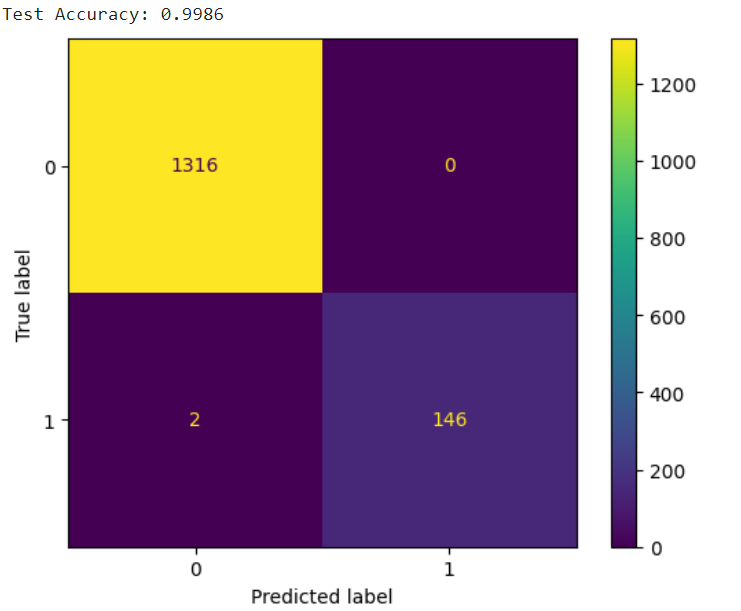
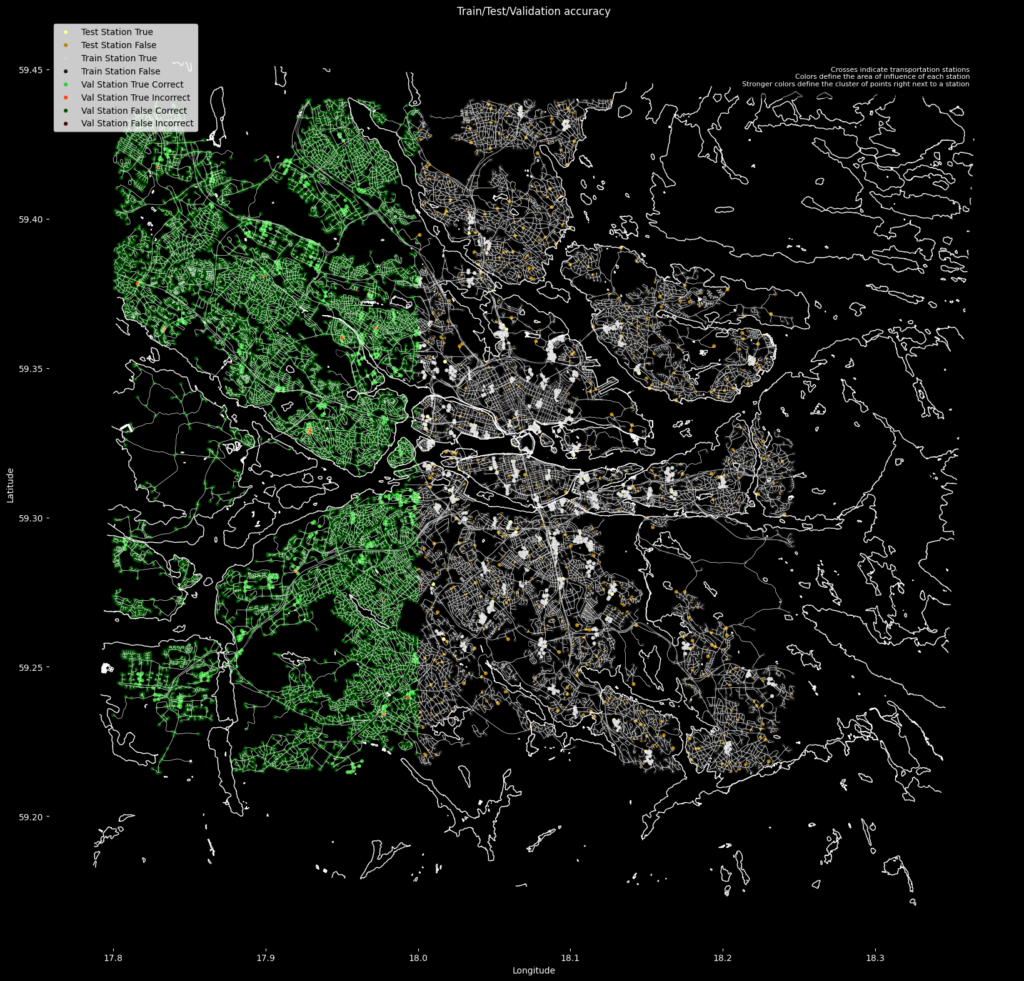
Future Directions: Looking ahead, our findings suggest promising applications beyond Stockholm. For instance:
- Adapting to New Cities: Applying our model to cities lacking metro systems like Gothenburg or Malmö, though challenging due to data availability. We acknowledge concerns about the model’s reliance on amenities data, which might be skewed by the presence of existing metro stations rather than accurately predicting their locations in cities without established networks.
- Enhancing Model Capabilities: Exploring additional features and refining clustering techniques to improve predictive precision further. Addressing the challenge of feature extraction and model scalability remains crucial to ensuring the model’s effectiveness across diverse urban environments.
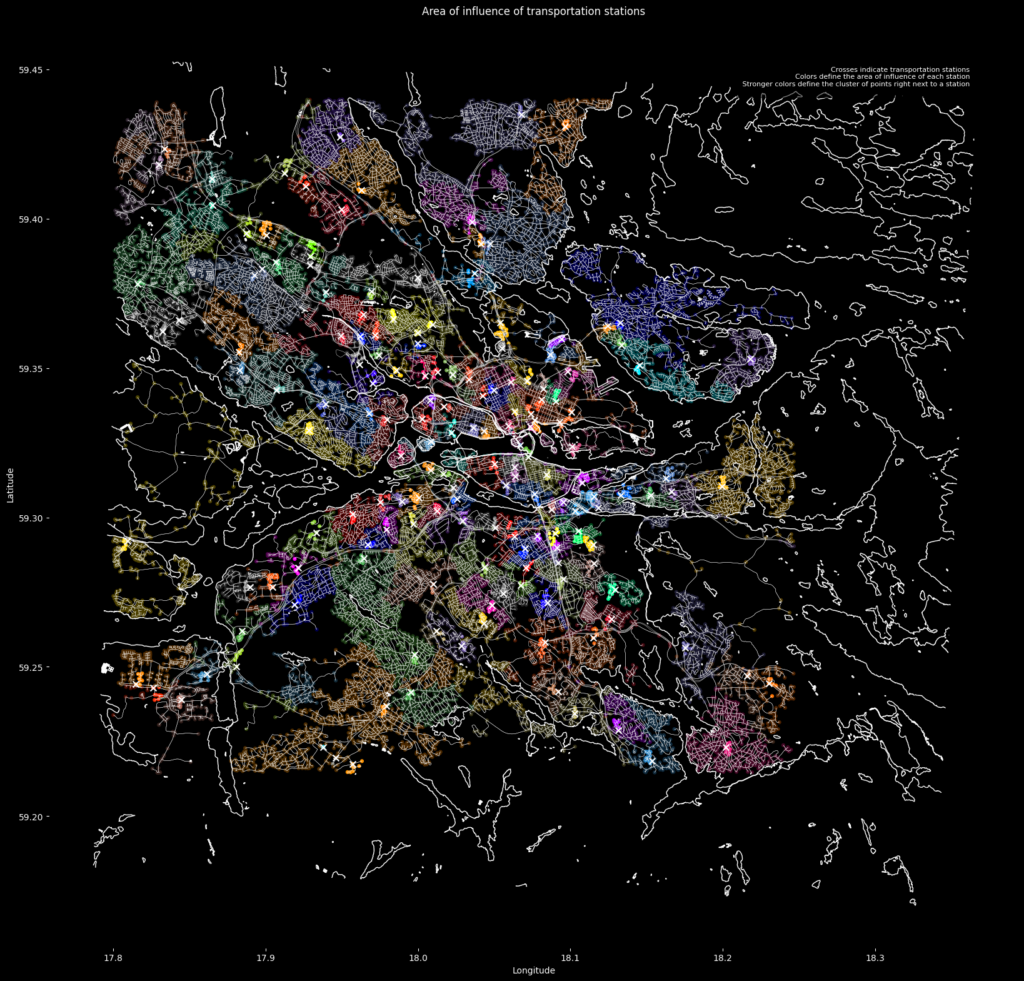
Conclusion: Our project exemplifies the transformative potential of Graph Neural Networks in urban planning. By leveraging advanced machine learning techniques, we aim to support sustainable development and efficient transportation systems in cities worldwide.
Acknowledgments: We extend our gratitude to our mentors David and Olga for their valuable guidance and support throughout this project. Together, we’ve advanced our understanding of Graph Machine Learning and its practical applications in shaping smarter cities.

